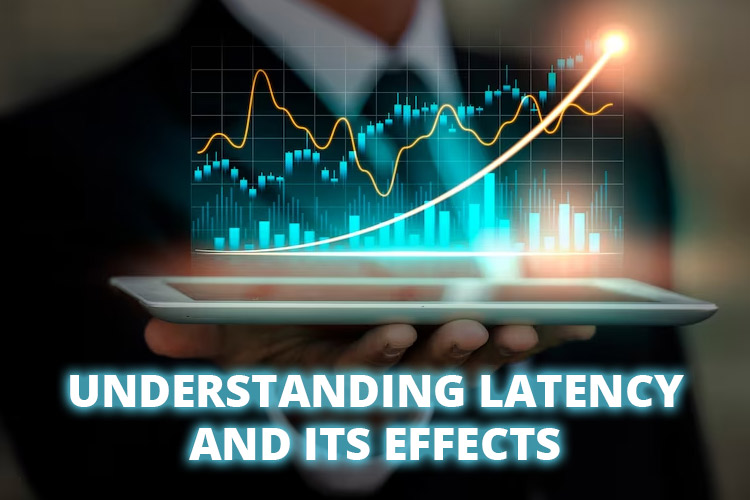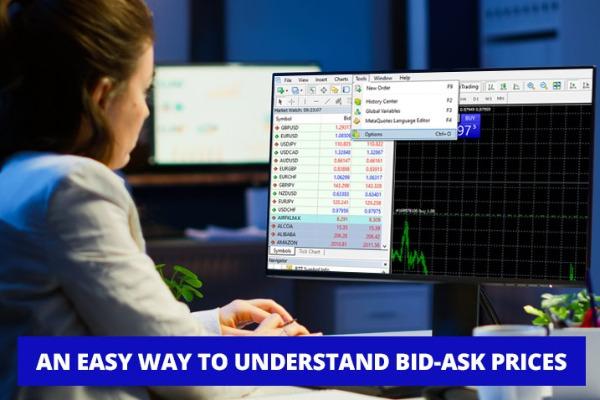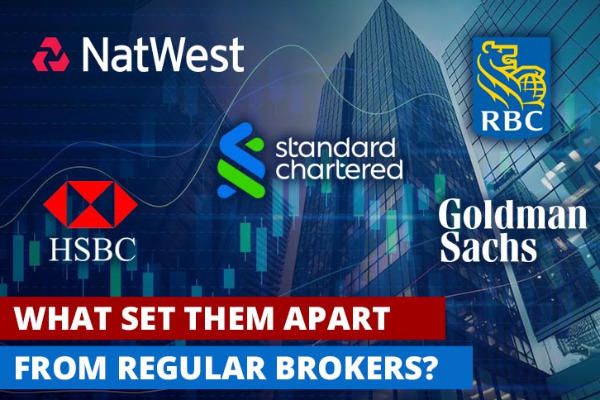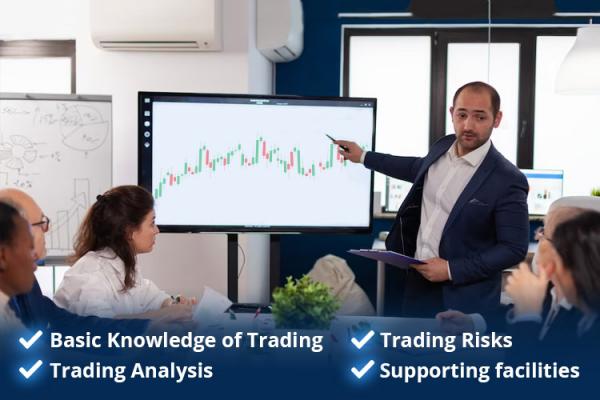Latency refers to a that happened during trading. It might affect your trading results since your order won't be executed at the right price.

Both new and professional traders must have heard about latency in trading. A lot of brokers tend to advertise their latency. But what is latency? In short, latency refers to the lag in the execution after the trader initiates it.
Technically, it takes time for a trading order to travel from the trader's system (or trading platform) to the exchange or trading venue where the order is processed and executed. Because of that, latency can cause your order to be executed at a different price than you intended.
That being said, what else should you know about latency in trading? How does latency affect your trades?
What You Should Know About Latency
In trading, think of latency as the speed at which your trading actions happen. If there's too much latency, it means things are moving slowly. This can be a problem because getting timely information from the market and responding quickly is tough.
One common latency and market data issue is called "data lag." This happens when there are problems or slowdowns in how information flows. Often, you can't do much about these problems because they're caused by glitches in the exchange's computer systems or internet connections.
These issues can crop up suddenly; sometimes, traders don't notice them. These can be a real challenge when you're trying to place an entry or exit position. This is where latency becomes crucial. It can determine whether your trade goes smoothly or turns into a problem.
How Latency Effect Your Trades
Latency affects trading by potentially leading to less favorable trade executions, missed opportunities, and increased risks. Here is how latency can impact your trades.
1. Slippage
Slippage refers to the difference between the expected price of a trade and the actual price at which the trade is executed. Slippage is crucial for some traders, especially high-frequency and algorithmic traders. Such strategies emphasize small price differences and execution speeds, so any change in those aspects could greatly impact profits and losses.
Imagine you want to buy something in the market. You tell your computer to do it, but there's a lag because of your system or network. During this, the prices in the market are changing. When your order finally goes through, you might pay more than planned.
On the bright side, sometimes this can also work in your favor. It's like a surprise discount. If your order gets delayed, you might buy something at a better price than expected. It is called "positive slippage."
2. Affected Trading Order
A smooth and successful experience in trading depends on reliably getting your orders filled. This relies on having market data arrive on time without any delay. Here's how trading usually works:
- You (the trader) place an order on a trading platform.
- The broker you're working with gets your order.
- The broker sends your order to the market.
- Your order joins a queue, waiting its turn to be executed.
Delayed order execution can increase traders' exposure to market risks. For example, if you intend to use a stop-loss order to limit potential losses, latency can result in the order not being executed promptly. In fast-moving markets, such latency can cause traders to miss out on opportunities.
How to Reduce Latency in Trading
Reducing latency in trading is crucial for staying competitive, achieving better trade outcomes, managing risk, and maximizing profitability.
Traders, particularly those engaged in high-frequency and algorithmic trading, invest in cutting-edge technology and infrastructure to minimize latency and maintain a competitive advantage in fast-paced financial markets. Here is how you can minimize latency.
1. Direct Market Access
Direct Market Access (DMA) in trading refers to a technology and service that allows traders to directly access financial markets and execute trades without needing an intermediary, such as a broker.
With DMA, traders gain direct and unfiltered access to various trading venues, including forex, stock exchanges, futures exchanges, and electronic communication networks (ECNs).
DMA systems are designed for speed and, as a result, reduce latency. They are often co-located with trading venues, which minimizes the physical distance between your DMA system and the exchange's servers.
See Also:
2. Change Your Device
Having a high-performance device helps you reduce latency. In addition to this, you should also consider trading software efficiency and market conditions in determining overall latency.
Traders often invest in high-performance computers or utilize dedicated trading workstations to ensure their devices don't introduce unnecessary in the trading process. Some considerations include:
- Processing Power.
- Memory (RAM).
- Storage Type.
- Operating System.
- Maintenance and Updates.
In addition to helping you reduce latency, using a good device can also help during various trading strategies that require speed. For example, scalping or other short-term trading strategies.
3. Improve Your Networks
Network connectivity is a critical factor in determining latency in trading. Traders aim to have high-speed, low-latency, and stable network connections to ensure their trade orders are transmitted and executed as quickly as possible.
A faster internet connection allows data to be transmitted and received more quickly, mitigating the risk of latency. You should opt for high-speed broadband or fiber-optic connections to reduce latency and to help during short-term trading.
4. Use Virtual Private Servers (VPS)
VPS can positively impact latency in trading by providing proximity to trading servers, stability, reliability, and security. By colocating your VPS in such data centers, you can significantly reduce physical distance and network latency between your VPS and the trading servers, resulting in faster order execution.
When used strategically, a VPS can be a valuable tool for reducing latency and improving the performance of high-frequency and algorithmic trading strategies. However, high-quality VPS hosting can be relatively expensive compared to standard shared hosting. That being said, several brokers offer free VPS hosting services nowadays.
Taking Advantage of Latency in Trading
The effect of latency in trading isn't all negative. A lot of high-frequency traders use latency arbitrage to get profits. Latency arbitrage is a trading strategy used in financial markets that exploits briefs or latency in transmitting market data between different trading platforms or exchanges. It is to be noted that it's different from crypto arbitrage.
This strategy seeks to profit from price discrepancies that occur due to latencies. However, it's essential to understand that latency arbitrage relies on fast and reliable technology, including high-speed data feeds and ultra-fast execution systems.
That being said, latency arbitrage can be controversial and may face regulatory scrutiny. Some exchanges and regulators impose rules and restrictions to curb or regulate this type of strategy, which can be seen as disruptive or unfair to other market participants.
After Words
Latency is crucial in trading because it can easily alter your results. The speed at which information moves and orders get done can affect whether you get the prices you want and avoid unwanted losses.
Dealing with issues like slippage, taking advantage of arbitrage, and ensuring your orders go as planned depend on managing latency. Traders and financial institutions spend a lot on high-tech tools and methods to deal with latency's downsides and maximize its benefits in modern trading.
As a retail trader, the best you can do is ensure direct system access through market executions and ECN platforms.

 Dedicated FREE FOREX VPS
Dedicated FREE FOREX VPS Free FOREX Virtual Private Server
Free FOREX Virtual Private Server MT4 Demo Contest, Get $500
MT4 Demo Contest, Get $500 Sign Up for an Account, Claim 60% Deposit Bonus
Sign Up for an Account, Claim 60% Deposit Bonus Free MT4/MT5 VPS 2024
Free MT4/MT5 VPS 2024 Send E-mail and Get Free Merchandise
Send E-mail and Get Free Merchandise $1K Refer a Friend Bonus for Pepperstone Pro clients
$1K Refer a Friend Bonus for Pepperstone Pro clients Maximize Your Earnings with 100% Deposit bonus
Maximize Your Earnings with 100% Deposit bonus Trade to Win, $5,000 Monthly Demo Contest
Trade to Win, $5,000 Monthly Demo Contest Claim 30% + 15% Deposit Bonus from LiteFinance
Claim 30% + 15% Deposit Bonus from LiteFinance











